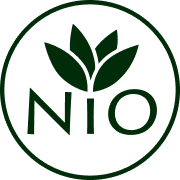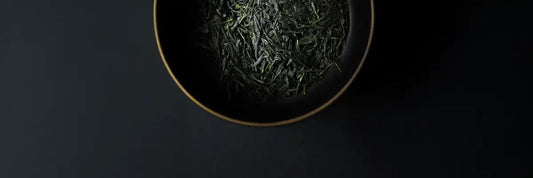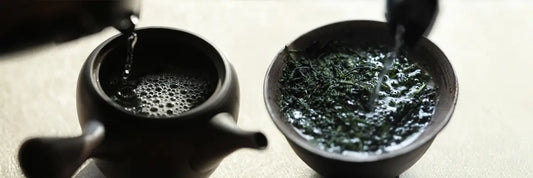Kabusecha and Gyokuro are the two highest quality leaf teas in Japan, but what’s the difference between them?
In this article, we’re going to compare kabusecha vs gyokuro when it comes to flavor, health benefits, caffeine and more.
Without further ado, let’s get brewing!
Kabusecha vs Gyokuro at a glance
When it comes to comparing kabusecha vs gyokuro, the first step is to identify the definition of each of these teas. Both of them are shaded, steamed and tightly rolled and yet the end result is different. Let’s first start with the shading process.
Shading
The big difference between kabusecha vs gyokuro is the shading process. While kabusecha is shaded for 10-14 days, gyokuro goes through the longest shading process of any leaf tea with 20 days or more.
It's in these additional weeks that the tea really develops these bold, savory flavors. While kabusecha is rich and sweet, it doesn’t have the same level of umami as gyokuro.
Rolling of the green tea leaves
Another difference between kabusecha vs gyokuro arises in the processing of the two teas. While both of them are steamed and carefully dried to lock in their flavors, gyokuro goes through an additional drying phase.
This leads to a difference in the appearance of gyokuro vs kabusecha. Gyokuro leaves are tightly rolled into these thin needle shapes, while kabusecha is slightly flatter. It is still carefully rolled, just not as carefully as gyokuro.
Flavor profile

Kabusecha
The flavor of kabusecha is somewhere in between a gyokuro and a sencha. It has a strong sweetness and all of the bitterness has been smoothed out during the long shading process, but you won’t get the same hit of umami.
Gyokuro
In gyokuro, you get these unique flavors of sweet broth, seaweed and even a hint of saltiness, it’s a flavor combo that seems more at home in a bowl of soup than in a cup of tea. In kabusecha, you won’t find these, but you will find the steamed vegetable notes of a sencha, but with a more refined sweetness.
Texture of both teas
When evaluating a tea, you’re not just looking at the flavor but also the texture or mouthfeel. Here, there is a significant difference between kabusecha vs gyokuro. Gyokuro has a much thicker texture, due to the higher levels of amino acids that create a more viscous structure.
This adds a new dimension to the tasting experience, as you savor not only the taste, but also the texture of the tea as it glides over your tongue drop by drop. If you want to accentuate this texture, you can brew the gyokuro with 10 grams of leaves and as little as 50ml of water.
Health benefits of kabusecha vs gyokuro
In addition to flavor, there is also a difference in the health benefits of kabusecha vs gyokuro. The shading process completely alters the chemical composition of the leaf, and because the teas are shaded for different periods of time, they have different nutrient profiles.
Antioxidants
Kabusecha actually has an advantage when it comes to antioxidants. Catechins, the main antioxidant in green tea, is produced when the tea leaves are exposed to sunlight. Because gyokuro is shaded for a longer time, it has lower levels of antioxidants compared to sencha.
Caffeine
Caffeine is produced by the tea plant as a defense mechanism to protect the leaves from insects. Shading can be a stressful time for the tea plant, and it produces more caffeine in order to defend itself. This is why the longer a plant is shaded, the higher the caffeine content.
For this reason, gyokuro has a higher content of caffeine compared to kabusecha.
Theanine
In addition to having more caffeine, gyokuro is also higher in theanine. When a tea plant is cut off from sunlight, it is able to retain more of its theanine, rather than converting it into catechins to protect against the UV rays.
This higher theanine content is why gyokuro drinkers report having this long lasting, calm alert energy throughout the day. It’s also thought to induce a calming effect on the brain and stimulate alpha brainwave activity, the same brainwaves stimulated during long periods of meditation.
Chlorophyll
Finally, we have chlorophyll, a plant pigment that can help the liver in its detoxification process. This will be found in higher concentrations in gyokuro vs kabusecha. While deprived from sunlight for 3 weeks, the plants used to make gyokuro will produce more chlorophyll to compensate for the lack of sun energy.
Brewing instruction for kabusecha and gyokuro
In addition to processing, flavor and health benefits, there is also a difference in brewing gyokuro vs kabusecha. Gyokuro requires special care in order to produce the trademark sweet umami brew, while kabusecha follows the path of a normal sencha.
Gyokuro needs cooler water at 140°F/60°C and a brewing time of 2 minutes to unfurl the tight needle shaped leaves, while kabusecha can brew for 1 minute at 160°F/70°C.
Gyokuro strong brew
While a daily cup of gyokuro can be brewed with the standard 5 grams of leaves and 150ml of water, there is also another, almost “ceremonial” way to brew. When you use 10 grams of leaves and 50ml of water, you concentrate the flavor into a smaller space.
This makes the texture thicker and the flavor far more intense. You may only get a glass of gyokuro the size of a thimble, but every drop will feel like an explosion of flavor!
The final verdict of these 2 iconic Japanese teas
Both gyokuro and kabusecha are the highest quality leaf teas in Japan, and which one is better comes down to a matter of personal preference. If you are feeling bold and want to tackle the unique, brothy umami flavors, gyokuro is the tea for you.
If you like these slightly thinner textures and a hint of that sencha acidity, you may prefer kabusecha. It’s also important to think of kabusecha as in between gyokuro and unshaded sencha in terms of flavor. If you find sencha too grassy but gyokuro too brothy, we may have found your perfect cup of tea!
Where to find the best gyokuro?

After traveling around Japan for the past few years, we’ve sampled dozens of different gyokuro teas and found that the best, without contest, are produced on the farm of Mr. Sakamoto in Shibushi.
Not only is he able to grow healthy, flavorful gyokuro teas, but he’s able to do it without the use of pesticides or chemicals. If you know anything about gyokuro, you’ll know this is not an easy feat! If you want to try his best gyokuro teas, you can find them on our website.




